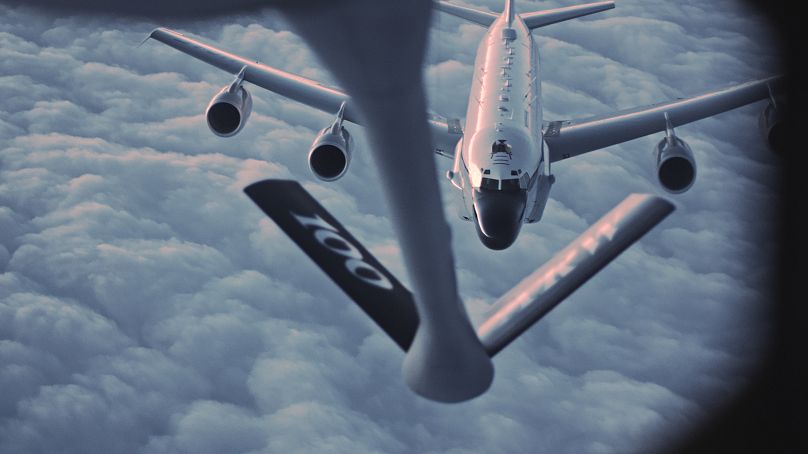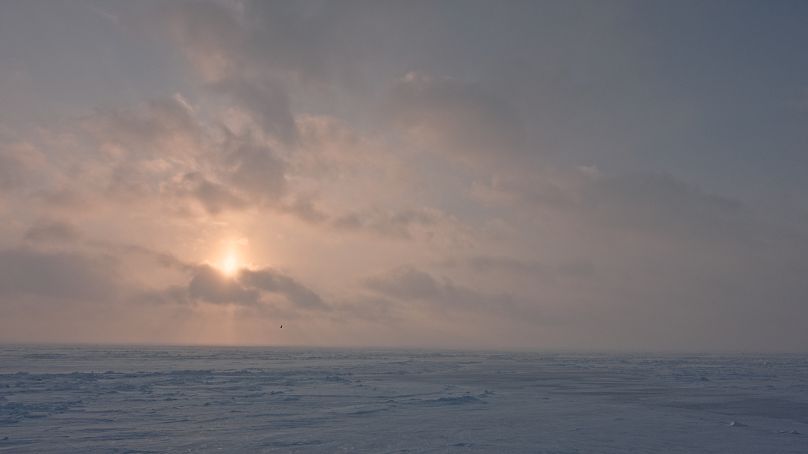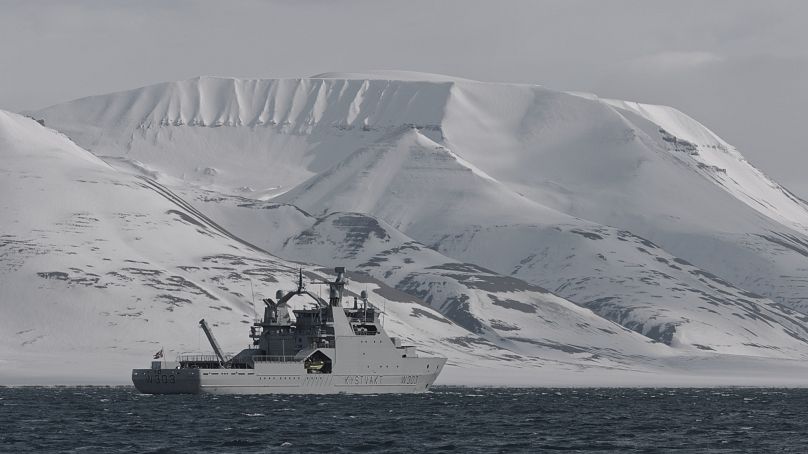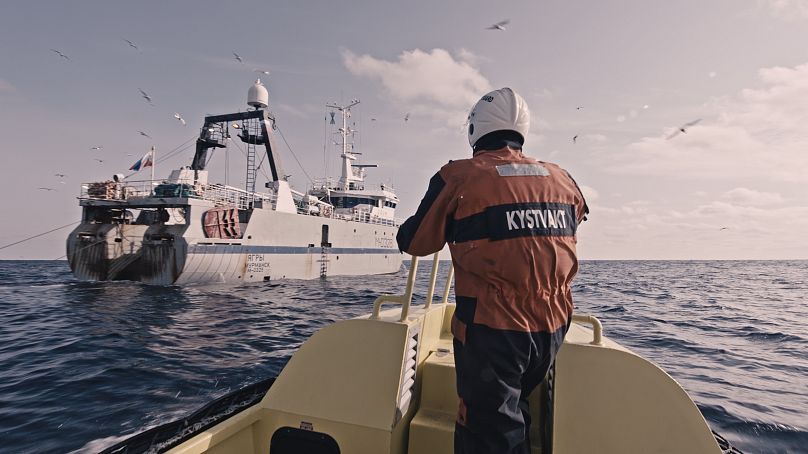Arctic Sea Ice Day: How climate change is melting sea ice and threatening peace in the Arctic.
High above the Arctic a US spy plane is taking on fuel. The pilot of the tanker aircraft, Captain Vince Pellegri, flies as steadily as possible so that the spy plane behind him can nudge up safely to his refuelling pipe.
A few years ago Captain Pellegri would have been refuelling similar spy planes over Afghanistan and Iraq, as part of the United States 351st Air Refuelling Squadron. But below him today is one of the largest unpopulated areas on the planet.
For although there are no tanks or infantry battalions marching across the shrinking Arctic ice, this is one of the most strategically fragile and heavily militarised regions on the planet. Climate change is largely responsible.
Melting Arctic ice is revealing valuable resources
The Arctic ice is melting faster than scientists previously predicted. Dr Ella Gilbert is a climate scientist at the British Antarctic Survey.
“In the Arctic, sea temperatures are soaring and sea ice cover is plummeting at an alarming rate. A region that was previously warming twice as fast as the rest of the planet is now heating at nearly four times the global average. And parts of the Svalbard archipelago are warming at an unprecedented seven times that,” she says.
The impact on this catastrophic rate of Arctic ice melt is typically illustrated by images of polar bears starving as sea ice diminishes.
But Captain Pellegri’s aircraft is arguably as much a symbol of climate change as an imperilled polar bear.
As the ice melts, huge new reserves of natural resources are being exposed across the Arctic Ocean; resources that were previously hidden from view and exploitation by the permanent ice sheet.
Superpowers race to new buried treasure on the Arctic sea floor
These resources include thousands of tonnes of previously inaccessible fish stocks.
Beneath the fish, and in the seabed, is another new treasure trove of oil, gas and - more significantly - rare earth minerals.
Rare earth minerals, with exotic names such as neodymium and praseodymium, are the raw materials for the green energy revolution. They are essential components of wind turbines, the very technology we need to curb climate change.
And yet in the Arctic in a cruel twist of irony, they are being exposed by that same climate change.
All these resources have one thing in common: everyone wants them.
Existing reserves elsewhere on the planet are scarce or problematic to extract, so there is a race to claim and exploit these new Arctic reserves.
Where there is a race for resources, especially between superpowers, there is always preparation for conflict. And where there is preparation for conflict, there is the very real risk of war.
This is where climate change deals the planet a double whammy.
Because no one thought the ice would ever melt, there are few international treaties on who owns what and where. And because the ice is retreating, it is also easier to deploy all the technology of modern warfare.
Surface warships now navigate seas that were previously the realm of a few Cold War submarines, lurking stealthily under the ice.
And nations with land in the Arctic, such as Russia, Canada and the US, are finding it easier to build and operate new naval and air bases.
Over the past decade Russia has expanded and modernised more than 50 existing military facilities across the Arctic. It has also constructed at least three new bases from scratch.
The message is clear. They are putting military muscle behind their controversial claim to minerals on the seabed as far north as the North Pole itself. Russia even planted its flag on the seafloor at the Pole in 2007.
Geologists, not lawyers, are needed to interpret international law in the Arctic
At present the only international agreement on rights to exploit sea bed minerals is the UN Convention on the Law of the Sea.
This says a nation has the rights to mineral resources on any continental shelf that extends out from its coastline. Russia says its continental shelf, called the Lomonosov Ridge, extends as far as the North Pole and beyond.
Other nations disagree as it’s a vague geological concept open to interpretation, and they say the Arctic sea bed has never been properly surveyed to establish what is or isn’t a continental shelf.
Only intensive research by geologists is likely to settle this.
Troubling is brewing on the surface as well. Just as warships can now navigate through the open waters left by the melting ice, so too can merchant ships. The two new sea routes that have opened up across the top of Canada and Russia, both significantly cut the time and cost of shipping from Asia to Europe.
Canada has jurisdiction over much of the Northwest Passage, but its concern is mainly safety. Russia’s concern with the Northern Sea route around Siberia is more about military and economic control.
Without its ice, Iceland relies on its NATO allies for defence
Iceland is strategically vital to controlling free movement to and from the Arctic. The Icelandic Foreign Minister, Thórdís Kolbrún, is in no doubt of the impact of climate change on her nation’s security.
“When you look at the map of the world from the top you can see the challenges we face with climate change and the opening up of new sea routes. So it is important we make decisions within International Law and within a Rules Based Order,” she says.
But after the invasion of Ukraine, the future of an International Rules Based Order is looking increasingly tattered.
Without any armed forces of its own, Iceland relies on other NATO allies to provide its security.
This year it has been the turn of Norway to provide a fighter squadron to police Iceland's airspace with its F35 fighters. The Commander, Lt.Col. Trond Haugen is aware of his squadron’s responsibility.
“Norway is here to defend Icelandic airspace, which is also NATO airspace, from any kind of infraction from Russia," he explains.
A Net Zero NATO
Perhaps the strongest evidence of how climate change is increasing the risk of conflict in the Arctic comes from the policy shifts in NATO and the statements from its Secretary General, Jens Stoltenberg.
“Climate change is making the High North more important because the ice is melting and it becomes more accessible, both for economic activity and for military activity. Melting sea ice and warming temperatures will fundamentally shift the security challenges in the region”, he says.
The Secretary General has also recognised that NATO itself has a role to play in reducing the impact of climate change. He recently announced the Alliance’s own programme to achieve net zero by 2050.
“I believe that in the future, the most advanced military vehicles, and the most resilient armed forces, will be those that do not rely on fossil fuels.”















